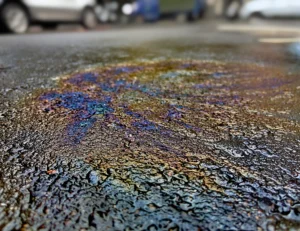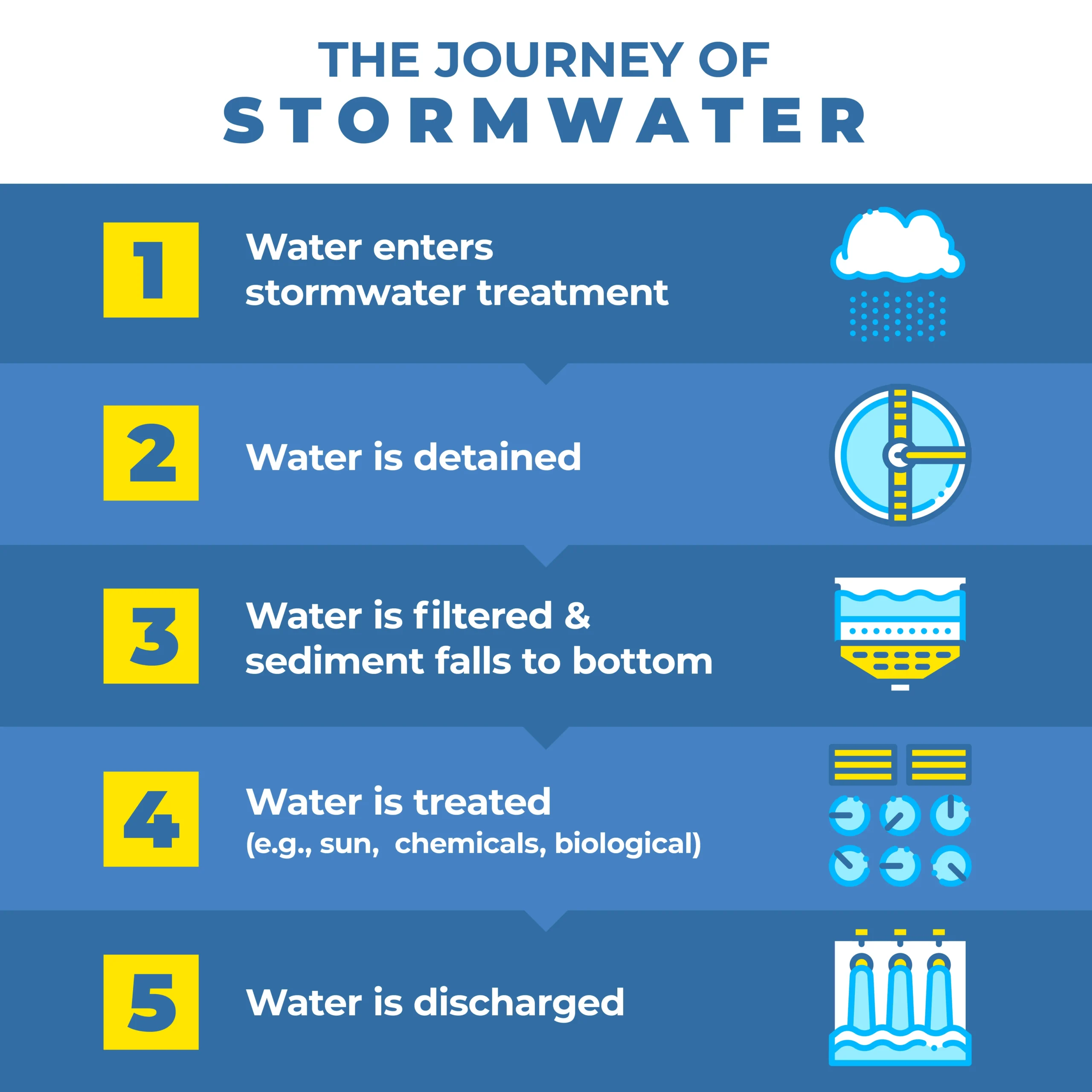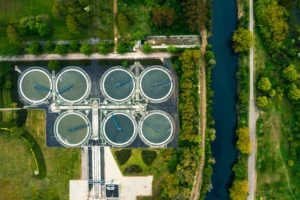
Resources and News How To Improve Your Coastal Stormwater Drainage System
August 14, 2023
Stormwater runoff is one of the fastest-growing sources of pollution in the United States. The solution to improving stormwater runoff requires every community to put a renewed focus on managing stormwater effectively before it’s introduced back to natural water systems.
Whether you are worried about flooding or are confronted with water closures due to contamination, let’s walk through how you can offset these challenges with effective engineering and design.
Stormwater management revolves around effective design
Because impervious surfaces such as parking lots, roofs, and paved roads can’t absorb water the way that forests and grasslands can, designing a stormwater management system for developments to imitate the properties of natural landscapes is critical to helping reduce pollution and flooding in our local communities.
Water quality vs. water quantity
Water quality and water quantity are closely linked, and knowing how they interact is crucial to implementing an effective stormwater management solution.
Water quantity — Pertains to the amount or volume of water available in a given drainage basin or system. When there is too much water (e.g., flooding), it requires assessing the availability, distribution, and sustainability of water resources.
Water quantity considerations involve factors such as rainfall patterns, surface water runoff, groundwater recharge rates, building/structure elevations, storage capacity in reservoirs, and water demand in sectors like agriculture, industry, and domestic use.

Water quality — Refers to the chemical, physical, and biological characteristics of water. Focusing on water quality means focusing on assessing the suitability of water recharge back into the local water bodies such as lakes, rivers, oceans, aquifers, reservoirs, and groundwater. Monitoring and maintaining water quality is crucial for ensuring safe and sustainable water supplies.
Water quality parameters include factors like pH, temperature, dissolved oxygen, turbidity, nutrient levels, presence of pollutants (e.g., heavy metals, pesticides, bacteria), and overall ecosystem health. Poor water quality can mean negative effects on human health, ecosystems, and economic activities that rely on water resources.
How can we improve stormwater quality?
With new innovations coming to light every day, here are just a few ways that our team can work sustainable design into your existing and future projects:
- Watersheds analysis
- Downspout and/or rainwater leader design
- Rainwater harvesting
- Rain gardens
- Bioswales
- Urban tree canopies
- Permeable pavements and surfaces
- Green parking lots and streets
How does stormwater runoff affect the ocean?
When stormwater isn’t treated properly before it is introduced back into water channels, especially those that lead to the ocean, it can lead to a wide variety of issues for the water, including introduction of sediment, nutrient overloading, temperature changes, habitat alteration, and pollution.
So, what does that mean for your community?
At a high level, improperly managed runoff can lead to a downturn in your economy and unsatisfied residents. On a deeper level, improper management of stormwater can create permanent damage to your coastal ecosystem and even put residents’ health at risk.
Dilution = the solution to pollution
In order to keep public lakes, rivers, and ocean beaches open in your community, there must be active steps in place to reduce pollution concentrations prior to releasing it. In addition to creating ways to reduce stormwater pollutants at the source, establishing effective stormwater treatment trains can make the difference between clean waterways and closures. (Quick refresher: a treatment train is a sequence of stormwater treatment methods, designed to meet the needs of a specific environment in order to maximize water quality.)

Effective stormwater management = a better economy
For many communities, bodies of water play a large part in the tourism economy — so when algae blooms or other environmental issues arise, these attractions must close, and the economy can suffer quickly. These types of events can also make your community less desirable to live in, and less appealing for developers who are looking for thriving areas where they can bring new projects. Effective stormwater management helps reduce flood insurance rates for homeowners and businesses while also keeping the roads safer for emergency evacuation events.

Need to improve your stormwater design?
At Interwest, we look at projects as a whole — not just what works for the issue at hand. As engineers with a network across the country, we use our local expertise with the decades of experience our team has gained working on stormwater management in jurisdictions of all sizes in both coastal and freshwater environments.
When you bring us into your stormwater project, you’ll get the peace of mind that we’ll do the work correctly the first time, including meeting stormwater water quality and quantity standards, introducing proactive designs that consider all areas of your community, and due diligence (i.e., peer review, independent review, constructability review) to ensure that the design will be effective in addressing stormwater challenges.
Keep projects compliant with ongoing changes to EPA requirements
If you’re in the middle of a development project, there’s always the chance that environmental codes will change. With Interwest, we can help you navigate changing compliance requirements to keep your timeline intact and keep your project up to code.

